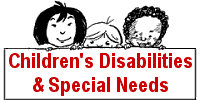 |

| |
|
| ||
Therapeutic and Handicapped Horse Back RidingBy Linda Hubley
Therapeutic handicapped riding programs are popping up all over the country. These riding programs bring disabled children and adults together with horses in a world where disabilities can fade away, if only for a short time. Fears can be overcome, self-esteem built up, can inspire confidence and often times the programs can give control of movement via the horse to a child that has not much control. Some of the other important factors that horseback riding offers is it teaches a skill while at the same time helps the rider to stretch and strengthen muscle tone. The rhythm of riding helps to relax the body and improve balance and coordination. A good riding program will have safe, gentle horses, provide riding helmets, assist with getting off and on the horse/pony and provide a handler for leading and an attendant walking on alongside the rider. These are special horses with a special attitude, many of these horses know that they have to "take care" of the rider. First check out the stable, make sure they do use kind, gentle horses, check out the safety and cleanliness of the stable, check for references from riders current and past, instructors in my state have to be licensed to give any kind of riding instruction. If your child seems frightened don't push them to go on, visit the stable frequently, lead up to petting or brushing the horse/pony, in time most any child will attempt to ride. Remember the horse sees us bigger than we see them. The first lesson, dress properly. Long pants, hard soled shoes or boots are usually recommended but sneakers can be used if necessary. Make sure a helmet is always used. Each stable will differ on their rules to some degree. Usually the first time will be led by an experienced horse handler with an attendant walking alongside the horse, when the rider becomes more comfortable and confident, the instructor will use a "loungeline" this is a long line that is attached to the horses halter while the instructor is on the other end of the line in the center of the ring. The rider thus has more freedom to control the horse his or herself. The next step up is to ride in a ring with no lead or loungeline attached. Freedom of movement with the horse with the instructor in the ring. After this, it's on to the Special Olympics for some. There are many programs around the country and many can be accessed via the Internet. Oh yes, one other final note, the horse and rider usually make a friendship that lasts a lifetime. Linda Hubley, Mom to Matt 34 1/2 weeker now 11 & Tanya 41 weeker now 7. My family has been with horses for generations and now my son and daughter are enjoying showing, riding and being in the 4H horse club. There is a great kinship made when you befriend animals. Happy Trails. |
|
|
Cerebral Palsy Articles Research/Diagnosis Cerebral Palsy Books Resources Children's Disabilities and Special
Needs SHOPPING
|
Comeunity : Parenting | Adoption | Special Needs
Comeunity www.comeunity.com Parenting Support for Your Unique Family